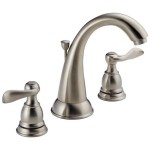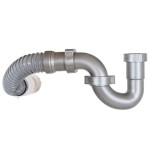Best Way to Clean Old Grout In Bathroom
Grout, the porous material that fills the spaces between tiles, is a common breeding ground for mold, mildew, and stubborn stains in bathrooms. Over time, even with regular cleaning, grout can become discolored and unsightly. Addressing this requires more than just surface cleaning; it demands a targeted approach to penetrate the pores and effectively remove the accumulated grime. The selection of cleaning methods and materials is crucial in restoring grout to its original appearance and preventing future discoloration.
The challenge with cleaning old grout stems from its inherent porosity. This allows liquids and particles to seep into the material, creating a haven for bacteria and fungi. Traditional cleaning methods, such as wiping with a damp cloth or using mild soap, often fail to address the underlying issue. Instead, these methods may simply spread the dirt and grime, making the problem worse over time. Therefore, a more aggressive and specialized cleaning strategy is required to effectively clean old grout in the bathroom.
Assessing the Condition of the Grout
Before embarking on any cleaning process, it is essential to thoroughly assess the condition of the grout. This involves identifying the type and severity of the stains, the presence of mold or mildew, and the overall structural integrity of the grout. Grout that is crumbling, cracked, or severely damaged may require replacement rather than cleaning. Attempting to clean compromised grout can further exacerbate the problem and lead to more extensive repairs. A visual inspection combined with a tactile assessment can help determine the best course of action.
Different types of stains may require different cleaning solutions. For instance, mildew stains often appear as black or dark green spots, indicating the presence of mold. These stains typically respond well to bleach-based cleaners. Hard water stains, on the other hand, are often white or gray and require acidic cleaners to dissolve the mineral deposits. Soap scum, a common residue in bathrooms, can be removed with alkaline cleaners or enzymatic cleaners. Identifying the specific type of stain present allows for the selection of the most effective cleaning solution.
The presence of mold or mildew necessitates a cautious approach. Mold and mildew can pose health risks, particularly for individuals with allergies or respiratory issues. When dealing with mold, it is crucial to wear protective gear, including gloves, a mask, and eye protection. Proper ventilation is also essential to prevent the inhalation of spores. In severe cases of mold infestation, professional mold remediation services may be required to ensure the safe and effective removal of the mold.
Choosing the Right Cleaning Method and Materials
The selection of the right cleaning method and materials is critical for achieving optimal results while minimizing the risk of damaging the grout or surrounding tiles. Several effective cleaning methods are available, each with its own advantages and disadvantages. These methods range from DIY solutions using household ingredients to specialized commercial cleaners designed specifically for grout cleaning. Factors to consider when choosing a cleaning method include the severity of the stains, the type of grout, and the desired level of effort.
One popular DIY cleaning solution involves using a mixture of baking soda and vinegar. Baking soda, a mild abrasive, helps to scrub away surface stains, while vinegar, an acidic solution, helps to dissolve mineral deposits and soap scum. To use this method, a paste of baking soda and water is applied to the grout and allowed to sit for several minutes. Then, vinegar is sprayed onto the baking soda paste, creating a fizzing reaction that helps to lift the stains. The grout is then scrubbed with a stiff-bristled brush and rinsed with water.
Another effective DIY cleaning solution involves using hydrogen peroxide. Hydrogen peroxide is a mild bleaching agent that can help to lighten stains and kill mold and mildew. To use this method, hydrogen peroxide is sprayed directly onto the grout and allowed to sit for several minutes. The grout is then scrubbed with a stiff-bristled brush and rinsed with water. Hydrogen peroxide is generally safe for use on most types of grout and tile, but it is always recommended to test it in an inconspicuous area first to ensure that it does not cause any discoloration.
For more stubborn stains, commercial grout cleaners may be necessary. These cleaners are typically formulated with stronger chemicals designed to penetrate deep into the grout and break down the stains. When using commercial grout cleaners, it is essential to follow the manufacturer's instructions carefully. Most commercial grout cleaners require the user to wear gloves and eye protection. It is also important to ensure adequate ventilation to avoid inhaling harmful fumes. Before using a commercial grout cleaner on a large area, it is recommended to test it in an inconspicuous area first to ensure that it does not damage the grout or tile.
Steam cleaners are another effective option for cleaning grout. Steam cleaners use high-temperature steam to loosen dirt and grime, making it easier to scrub away. Steam cleaning is a chemical-free option that is safe for use on most types of grout and tile. However, steam cleaners can be expensive, and they may not be effective on heavily stained grout. When using a steam cleaner, it is important to follow the manufacturer's instructions carefully. It is also important to wear gloves and eye protection to avoid burns.
Step-by-Step Cleaning Process for Old Grout
A systematic approach is essential for effectively cleaning old grout. This involves preparing the area, applying the chosen cleaning solution, scrubbing the grout, rinsing thoroughly, and allowing the grout to dry completely. Attention to detail at each stage of the process will contribute to a successful outcome.
Begin by preparing the area by removing any loose debris, such as hair or dirt. This can be done with a vacuum cleaner or a broom. Next, protect any adjacent surfaces that may be sensitive to the cleaning solution, such as wood or metal trim. This can be done with painter's tape or plastic sheeting. Ensure adequate ventilation in the bathroom by opening windows or turning on the exhaust fan.
Apply the chosen cleaning solution to the grout, following the manufacturer's instructions or the recommendations for the DIY solution. Allow the cleaning solution to sit on the grout for the recommended amount of time. This allows the solution to penetrate the pores of the grout and begin to break down the stains. Avoid allowing the cleaning solution to dry on the grout, as this can make it more difficult to remove.
Scrub the grout thoroughly with a stiff-bristled brush. A specialized grout brush is ideal for this purpose, as it has a narrow head that can easily reach into the grout lines. Apply firm, even pressure while scrubbing, and work in a back-and-forth motion. Pay particular attention to areas with heavy staining or mold growth. For stubborn stains, consider using a grout saw or a small, pointed tool to scrape away the grime.
Rinse the grout thoroughly with clean water. This removes the cleaning solution and any loosened dirt and grime. Use a sponge or a damp cloth to wipe away the excess water. Repeat the rinsing process until all traces of the cleaning solution are gone. Leftover cleaning solution can attract dirt and grime, leading to future discoloration.
Allow the grout to dry completely. This can take several hours or even overnight. Avoid using the shower or bathtub until the grout is completely dry. Once the grout is dry, inspect it for any remaining stains. If necessary, repeat the cleaning process or try a different cleaning solution. To protect the newly cleaned grout, consider applying a grout sealer. A grout sealer will help to prevent future stains and make the grout easier to clean in the future.
Regular maintenance is critical to keep the grout clean and prevent the recurrence of stains and mold. This includes wiping down the shower walls after each use, ventilating the bathroom adequately, and periodically cleaning the grout with a mild cleaning solution.

How To Clean Mold In Shower Grout Tips And Tricks Certified Care

3 Top Secret Tricks For Cleaning With Vinegar Making Lemonade

How To Clean Grout Tile Cleaning Tips Simply Spotless

How To Clean Grout Cleaning Stains

How To Clean Grout Dirty In Five Minutes Without Using Bleach Express Co

How To Clean Bathroom Tile And Grout Reviews By Wirecutter

How To Clean Refresh And Seal Your Grout Easily Ly

The Only Way We Got Our Stained Grout White Again Young House Love

How To Remove Old Grout

The Ultimate Guide To Cleaning Grout 10 Diy Tile Cleaners Tested Bren Did
Related Posts







